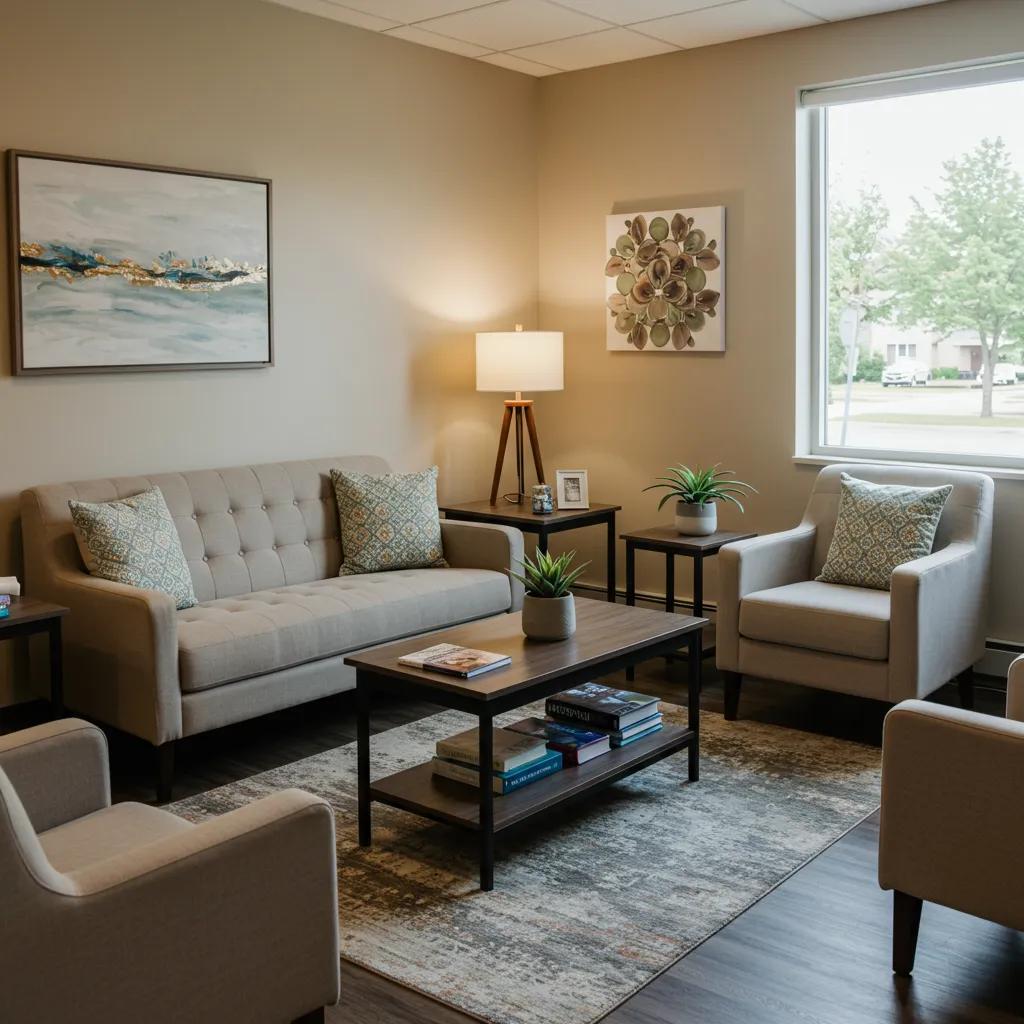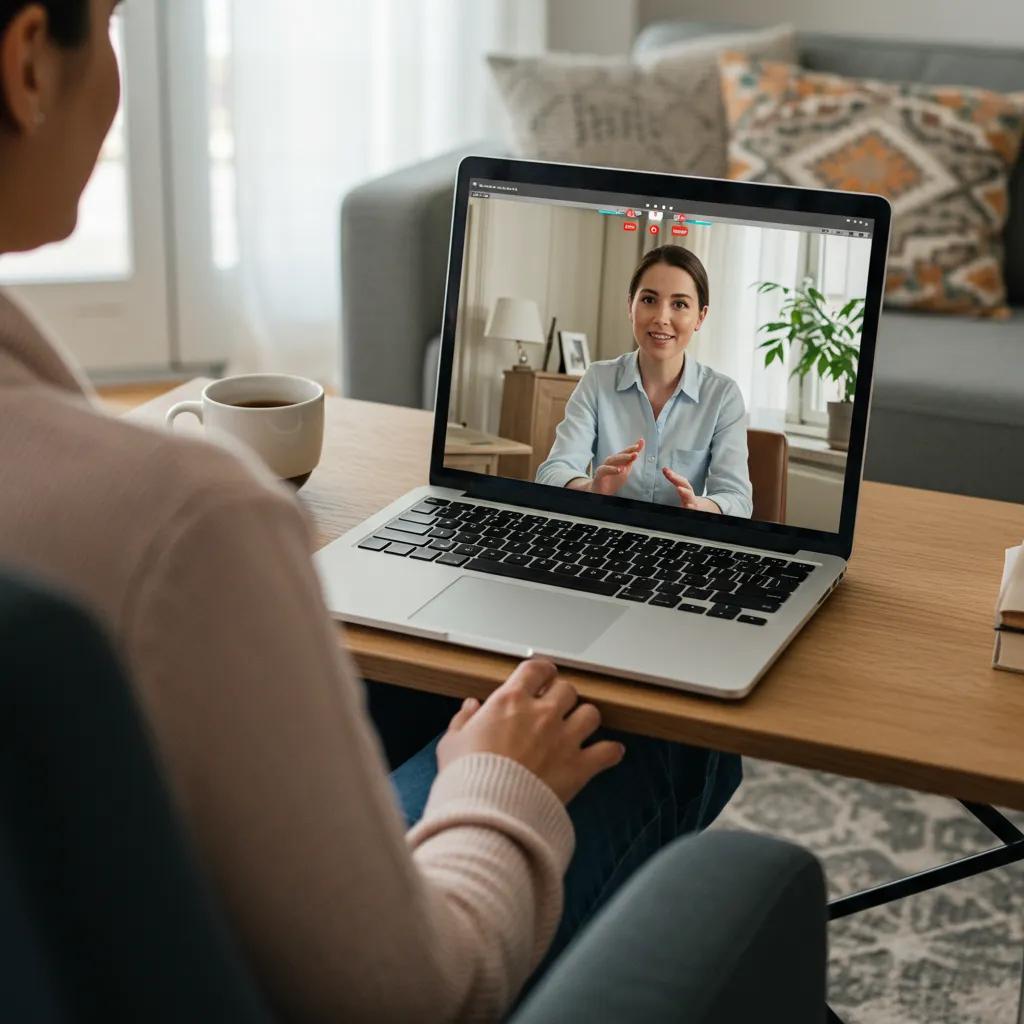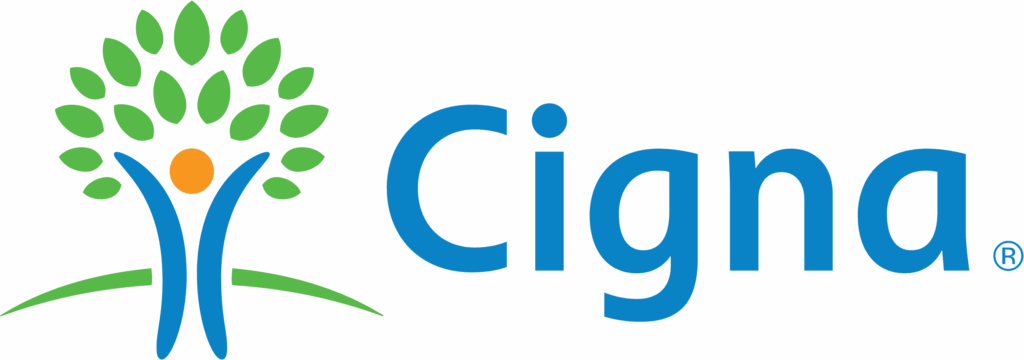
Intensive outpatient programs (IOPs) for mental health provide structured, evidence-based treatment while allowing participants to live at home and continue work, school, or family responsibilities. This guide explains what an intensive outpatient program for mental health is, how IOPs work, who benefits, and how these programs fit into the continuum of care between inpatient, partial hospitalization, and standard outpatient therapy. Many people seek IOPs because they need more support than weekly therapy but do not require 24/7 supervision; IOPs address that gap with group therapy, individual sessions, skills training, and medication management. You will learn about key benefits like DBT and CBT integration, condition-specific approaches (anxiety, depression, bipolar disorder, PTSD, dual diagnosis), virtual IOP options, and practical steps for finding and choosing the right program. The article also covers cost and insurance considerations with transparent tables and actionable checklists to help you evaluate programs and navigate admissions and coverage questions.
An intensive outpatient program for mental health is a structured treatment option that delivers frequent, multidisciplinary care without requiring inpatient admission, combining psychotherapy, skills training, and psychiatric support. Its mechanism centers on concentrated therapeutic contact—typically several hours per session, multiple days per week—so participants receive higher-intensity intervention while maintaining community integration. The specific benefit is rapid skill acquisition and stabilization in a real-world context, enabling participants to practice coping strategies between sessions. Below is a concise feature list that highlights how IOPs are organized and who they serve.
IOPs generally include the following core features:
These core features support a clear next step: how an IOP functions operationally from intake through discharge.
An IOP typically begins with an intake assessment that defines treatment goals, risk factors, and a personalized care plan informed by psychiatric and clinical evaluation. Treatment mechanisms combine group therapy for skills practice, individual therapy for tailored work, and psychiatric medication management when indicated, with regular progress reviews and adjustments. Programs often include weekly schedules showing group modules (DBT or CBT skills), individual sessions, and psychiatry check-ins, and they use outcome tracking to guide discharge planning. Understanding this operational flow leads to knowing which conditions are commonly treated in IOP settings.
Mental health IOPs treat a range of diagnoses including major depressive disorder, generalized anxiety disorder, panic disorder, bipolar disorder, PTSD, and co-occurring substance use disorders using integrated, evidence-based methods. The rationale is that individuals with moderate severity benefit from structured psychotherapy and skills training without inpatient-level supervision; for example, behavioral activation and CBT suit depression while exposure-based strategies and CBT address many anxiety presentations. Many programs also support dual-diagnosis care by combining relapse prevention and trauma-informed approaches, which prepares participants for sustained recovery in daily life. Having reviewed conditions, the next practical question is how long a typical program lasts.
Typical IOP durations vary but commonly range from 6 to 12 weeks, with session frequency and individual response affecting the final length; some participants stay longer when goals are incremental or comorbidities require extended work. The mechanism driving length is measurable progress toward goals—clinicians assess symptom reduction, functional gains, and safety to decide on transition or step-down care. Shorter programs emphasize acute stabilization and skills practice, while longer tracks incorporate deeper trauma processing or relapse-prevention modules. Knowing typical timelines helps prospective participants set expectations and plan logistics for participation.
Good candidates for IOPs are motivated individuals who need intensive therapy and support but are medically stable and able to maintain safety at home, including those transitioning from inpatient care or experiencing worsening symptoms despite outpatient therapy. The reason this profile fits IOPs is the program’s ability to combine therapeutic intensity with community-based practice—participants must have a safe living environment and some capacity for independent self-care. Contraindications include active, uncontrolled medical instability or severe acute suicidality requiring 24/7 supervision; such cases are better served in inpatient or PHP settings. Understanding candidacy naturally leads to examining the benefits that make IOPs effective for eligible participants.
IOPs deliver concentrated therapy and practical skills that translate into improved functioning and symptom reduction while preserving daily life roles; this happens through repeated practice, peer feedback in group settings, and coordinated psychiatric care. The mechanism of benefit is direct: structured modules like DBT and CBT teach emotional regulation and cognitive restructuring, while group formats provide social learning and normalization. Typical outcomes include reduced crisis frequency, improved coping in workplace or school settings, and a smoother step-down from higher levels of care. Below is a table comparing benefits, how they work, and expected value to participants.
| Benefit | Mechanism (how it works) | Typical outcome/value |
|---|---|---|
| Skill-building through DBT/CBT | Repeated skills modules and homework practice | Improved emotional regulation and reduced symptom spikes |
| Flexible care with community integration | Part-day schedule permits real-world application | Maintained employment or schooling while in treatment |
| Peer-supported group therapy | Peer modeling, feedback, and normalization | Increased adherence and reduced isolation |
| Coordinated medication management | Psychiatric evaluation with therapy alignment | Symptom stabilization and optimized pharmacotherapy |
This comparison highlights why many clinicians recommend IOPs before or after inpatient care; next we’ll explore specific ways flexibility supports daily life and work.
IOP flexibility supports daily responsibilities by offering evening or daytime group schedules and allowing participants to continue employment, education, and family roles while receiving intensive care. The mechanism is scheduling design: programs often run three-to-five sessions weekly with options for part-time attendance, which reduces the barrier of lost hours and income. Practical examples include attending evening skills groups after work or arranging telehealth group sessions to avoid commute-related stress. Recognizing scheduling options leads naturally into the therapies emphasized across IOPs.
IOPs emphasize evidence-based therapies—primarily DBT for emotional regulation and distress tolerance, CBT for cognitive restructuring and behavioral activation, and trauma-focused approaches for PTSD—each teaching practical skills applied between sessions. These therapeutic modalities work by providing structured learning modules, in-session practice, and homework tasks that consolidate new coping mechanisms in real-world settings. For example, DBT modules teach distress tolerance tactics that reduce crisis-driven behaviors, while CBT targets maladaptive thoughts that maintain depressive or anxious states. Having established core therapies, it’s important to understand how group therapy contributes uniquely to recovery.

Group therapy enhances recovery by creating a therapeutic community where participants practice interpersonal skills, receive feedback, and observe peer modeling—processes that accelerate skill generalization and reduce stigma. Mechanisms include role-play, cohort-based curricula, and facilitator-led reflections that reinforce learning while maintaining clinical safety and confidentiality. Evidence indicates group formats increase engagement and produce measurable functional improvements compared with individual therapy alone for some conditions. This emphasis on group process naturally connects to how medication management is integrated within IOPs.
CBT/DBT-Informed Intensive Outpatient Treatment for Anxiety and Depression
Intensive outpatient programs (IOPs) for mental health provide structured, evidence-based treatment while allowing participants to live at home and continue work, school, or family responsibilities. This guide explains what an intensive outpatient program for mental health is, how IOPs work, who benefits, and how these programs fit into the continuum of care between inpatient, partial hospitalization, and standard outpatient therapy. Many people seek IOPs because they need more support than weekly therapy but do not require 24/7 supervision; IOPs address that gap with group therapy, individual sessions, sk
Medication management within IOPs provides psychiatric assessment and ongoing monitoring to ensure pharmacotherapy complements psychotherapy goals; the process involves a prescribing clinician or psychiatrist who coordinates adjustments based on symptom tracking. The mechanism is clinical integration—psychiatric care aligns with therapy plans so medication supports skills work rather than replacing it. Typical outcomes include faster symptom stabilization and better adherence when medication is paired with psychoeducation and therapy. With benefits and integrated care clear, readers often ask how IOPs tailor treatment to specific diagnoses.
IOPs tailor treatment by selecting therapy mixes and session content relevant to each condition—DBT for emotion dysregulation, CBT for anxiety and depression, trauma-focused treatments for PTSD, and integrated SUD care for dual diagnosis—so interventions map directly to disorder mechanisms. The mechanism is individualized programming guided by assessment, ensuring that interventions target core maintaining factors such as avoidance in anxiety or mood cycling in bipolar disorder. This section details common condition-specific components and program goals in a concise table for quick reference.
| Condition | Common therapies in IOP | Program focus / goals |
|---|---|---|
| Anxiety disorders (including panic) | CBT, exposure, relaxation training | Reduce avoidance, increase coping, decrease panic frequency |
| Depression | Behavioral activation, CBT, group support | Increase activity, reduce anhedonia, monitor safety |
| Bipolar disorder | Psychoeducation, mood monitoring, med coordination | Stabilize mood, prevent relapse, improve adherence |
| PTSD and trauma | Trauma-informed CBT, CPT, prolonged exposure | Stabilization, processing when safe, reintegration |
| Dual diagnosis (co-occurring SUD) | Integrated SUD counseling + relapse prevention | Treat both conditions concurrently, reduce relapse risk |
This condition-by-condition framing makes clear how IOP content maps to clinical goals; next we break down what an anxiety-focused IOP specifically includes.
An anxiety IOP typically combines CBT-based interventions, graduated exposure exercises, relaxation and breathing training, and group modules for skills rehearsal and peer feedback. The mechanism of change focuses on reducing avoidance and retraining cognitive appraisal through repeated, supported exposures and cognitive restructuring homework. Short-term goals often include fewer panic episodes, improved functioning in feared situations, and increased use of coping strategies outside sessions. Understanding anxiety-specific components helps compare how depression is approached differently.
Depression treatment in IOP settings emphasizes behavioral activation, structured CBT sessions addressing negative cognitions, group support to counter isolation, and frequent monitoring for suicidality with collaborative safety planning. Mechanisms include activity scheduling to counter behavioral withdrawal and cognitive techniques that reduce ruminative patterns, supported by group reinforcement and psychoeducation. Expected outcomes include increased daily functioning, mood improvement, and reduced crisis visits when combined with appropriate medication management. From depression, attention shifts to IOP approaches for mood disorders like bipolar disorder.
IOP approaches for bipolar disorder center on psychoeducation about mood cycles, adherence support for medication, mood-charting skills, and relapse-prevention planning integrated into group and individual sessions. The mechanism focuses on early warning sign recognition and behavioral strategies that stabilize routine and sleep, which mitigates mood swings when paired with psychiatric oversight. Family involvement and communication skills are often emphasized to support adherence and safety. After mood disorders, trauma-focused pathways require a phased, safety-first approach.
IOP support for PTSD begins with stabilization and skills-building—grounding, emotion regulation, and safety planning—before proceeding to trauma processing where clinically appropriate, using trauma-focused CBT or CPT in a trauma-informed group context. The mechanism is phased care: stabilize physiological arousal and coping skills, then gradually introduce processing interventions when readiness benchmarks are met. Outcomes aim for reduced re-experiencing, improved regulation, and better daily functioning while minimizing retraumatization risks. Dual diagnoses require concurrent integration of substance use care with mental health treatment.
Dual diagnosis IOPs deliver integrated treatment modules that address substance use and mental health simultaneously, using relapse-prevention strategies, motivational interviewing, and cognitive-behavioral relapse planning within group and individual formats. The mechanism emphasizes treating both conditions as interrelated, reducing risk of substance-triggered symptom exacerbation by teaching coping skills that address underlying mental health drivers of use. Expected results include improved abstinence rates, better psychiatric symptom control, and coordinated referrals to SUD specialty care when needed. With condition-specific care outlined, many patients consider virtual access—next we examine telehealth IOP options.
Introduction to Day Treatment Programs: PHP and IOP in Mental Health Care
The intermediate level of mental health care which falls between outpatient and inpatient hospitalization is often provided through day treatment programs. These programs consist of partial hospitalization programs and intensive outpatient programs. This chapter serves as an introduction to the current handbook and provides an overview of the need for an intermediate level of care and how it fits into the continuum of mental health services for youth. Additionally, content related to development, implementation, evidence-based treatment, and evidence-based assessment along with services that may be accessed beyond day treatment are discussed.

Virtual IOP options replicate core program components—synchronous group skills training, individual teletherapy, and secure psychiatric consultations—delivered through HIPAA-compliant telehealth platforms that preserve confidentiality and engagement. The mechanism enabling virtual IOPs is secure video conferencing combined with digital homework tools and clinician-led online group facilitation techniques that adapt in-person methods to remote interaction. Benefits include expanded access and reduced travel burden, though suitability assessments determine if telehealth meets safety needs. Before discussing benefits, here is a short overview of how a virtual IOP typically operates.
A virtual IOP runs scheduled synchronous video groups and individual sessions, uses secure platforms for telepsychiatry, and provides digital materials and structured homework to support skill generalization between sessions. The mechanism for engagement relies on interactive facilitation—breakout practice, screen-shared psychoeducation, and online mood tracking—while clinicians monitor safety and provide crisis protocols adapted for remote participants. Sample virtual weekly schedules mirror in-person intensity with multiple sessions per week, and technical onboarding ensures participants can connect reliably. Having described operations, we next consider the benefits telehealth brings.
Telehealth IOPs increase accessibility for people in rural or underserved areas, reduce transportation and scheduling barriers, and support continuity of care during mobility or public-health disruptions. The mechanism is barrier reduction—remote delivery removes geographic constraints and can improve attendance and adherence, especially when programs offer flexible session times. Caveats include technology access and privacy considerations, and suitability must be assessed for individuals needing close in-person supervision. Understanding benefits leads to practical technical requirements for participants.
Participating in virtual IOPs typically requires a smartphone, tablet, or computer with a camera and microphone, stable broadband internet, and a private, quiet space to join sessions; programs often provide a technology checklist and troubleshooting guidance. The mechanism for successful participation is reliable connectivity and user familiarity with the chosen telehealth platform, so programs may offer test sessions and device tips to minimize disruptions. Backup plans—such as phone check-ins or contingency meeting locations—are useful when connectivity fails or privacy is compromised. With telehealth mechanics clear, many readers ask how IOPs compare to other levels of care.
IOPs occupy a middle-intensity tier in the continuum of care: they are more intensive than standard outpatient therapy but less restrictive than partial hospitalization programs (PHP) and inpatient psychiatric care, offering structured therapy without 24/7 supervision. The mechanism of this positioning is targeted intensity—enough therapeutic contact to stabilize symptoms and teach skills while allowing participants to test gains in daily life. Advantages of IOPs include multidisciplinary teams and peer groups, faster skill acquisition than weekly therapy, and lower cost and disruption compared with inpatient stays. The following comparison clarifies key distinctions.
IOP differs from PHP primarily in intensity and time: PHP typically involves full-day treatment similar to a hospital schedule, while IOP offers part-day sessions allowing residence at home; mechanisms differ because PHP provides closer monitoring and higher service density for higher acuity cases. PHP is suited to individuals needing more than outpatient-level observation yet not requiring inpatient admission, whereas IOP fits those ready for community-based practice. Choosing between them depends on acuity, safety needs, and available supports. This comparison sets up the contrast with inpatient treatment.
Inpatient mental health treatment provides 24/7 supervision, medical oversight, and a secure environment for acute stabilization, whereas IOP permits living at home and emphasizes community reintegration with scheduled therapeutic contact; the mechanism difference is supervision level and safety resources. Inpatient care is necessary for uncontrolled suicidality, severe medical instability, or when intensive monitoring is required, while IOP is appropriate for motivated individuals who need structured therapy but can maintain safety outside a hospital. Understanding these differences helps families decide the right level of care. Next, we compare IOP to traditional outpatient therapy.
Compared with weekly outpatient therapy, IOP offers intensified practice through multiple weekly sessions, multidisciplinary input, and group-based skill rehearsal that accelerates behavioral change and provides peer support. The mechanism is frequency and variety—repeated exposure to new skills and immediate feedback increases learning and increases the likelihood of generalizing skills to daily stressors. Consequently, IOP can shorten the time to measurable improvement and reduce crisis visits for many conditions. With level-of-care choices clearer, the next practical step is finding and choosing the right program.
Intensive Outpatient Programs (IOPs) in Mental Health Agencies
PHPs and IOPs may be housed within clinical mental health agencies. IOPs provide specialized services for specific presenting problems and/or specific populations. For example, IOPs
Finding and choosing the right IOP involves evaluating program credentials, therapy modalities offered, clinician licensure, outcome tracking, family involvement options, and logistical fit such as schedule and virtual access. The mechanism for good selection is informed comparison: asking structured questions during intake and reviewing program components ensures alignment with goals and safety needs. Below is a checklist of items to evaluate when comparing programs, followed by admission process steps.
When choosing an IOP, assess these key criteria:
A short summary: these evaluation points prioritize clinical quality, measurable outcomes, and practical fit; next we outline a typical admissions flow.
Look for transparent program descriptions that specify therapy types (DBT, CBT, trauma-focused), licensed treatment staff, routine outcome measurement, and clear safety protocols; these elements indicate clinical rigor and accountability. The mechanism for discerning quality is specific questioning—ask about clinician qualifications, sample curricula, and how the program measures progress and handles crises. Also consider family engagement options and whether the program supports coordination with external providers. These selection criteria naturally lead into the admissions process steps you can expect.
Admissions typically involve referral or self-referral, an intake assessment covering psychiatric history and risk, development of an individualized treatment plan, and scheduling of the initial treatment block; some programs require recent clinical records or psych evals for triage. The mechanism ensures appropriateness—clinicians verify medical stability, safety, and readiness for group-based work before enrollment. Typical steps include an initial phone screen, structured clinical interview, and orientation to program expectations and confidentiality rules. Knowing the admission flow guides practical searches for nearby programs.
To find an IOP near you, use provider directories, insurer provider lists, clinician referrals, and telehealth program searches; ask primary care or outpatient therapists for recommendations and verify program offerings directly with intake teams. The mechanism for locating programs is multi-source verification—cross-check program scope, insurance participation, and virtual options to expand choices. Many areas also have community mental health resources and regional lists that can help identify in-network options. Once you have candidate programs, understanding cost and insurance is essential for planning participation.
(If you are contacting programs, request an assessment appointment and ask about virtual alternatives, sliding-scale options, and documentation required for intake to streamline access.)
Costs for IOPs vary by location, program length, included services, and provider credentials; typical cost components include clinician fees for group and individual sessions, psychiatry/medication visits, and any ancillary services like family sessions or case management. The mechanism behind price variation is scope of services and staff mix—programs with board-certified psychiatrists and extensive aftercare typically cost more than smaller, community-based offerings. Below is a table that breaks down common cost components, typical ranges, and notes on insurance and financial aid considerations.
| Cost component | Typical range / example | Notes (insurance, sliding scale, financial aid) |
|---|---|---|
| Group therapy sessions | Variable; often included in weekly program fee | Frequently covered by insurance when medically necessary |
| Individual therapy | Per-session or bundled in program fee | May be billed separately; check in-network rates |
| Psychiatric medication management | Per-visit psychiatric fee | Often covered; pre-authorization may be required |
| Program enrollment / administrative fees | Small one-time fees possible | Ask about waivers or sliding-scale options |
This breakdown clarifies where costs arise and what to verify with insurers; the following subsections provide actionable guidance for typical cost questions and financial assistance.
Typical IOP costs depend on region and included services; many programs bill per-week or per-program cycles rather than per-session, and insurance reimbursement frequently covers medically necessary IOPs, reducing out-of-pocket expense. The mechanism affecting cost includes program intensity, clinician credentials, and whether psychiatry and labs are included. When estimating expenses, request an itemized estimate from intake and compare in-network rates against anticipated out-of-pocket amounts. Knowing how insurers commonly respond helps in the verification process.
Most major insurers cover intensive outpatient programs deemed medically necessary, but coverage varies by plan, in-network status, and prior-authorization requirements; typical mechanisms for approval include clinical documentation of necessity and clinician recommendations. To verify coverage, ask insurers about in-network IOP providers, required CPT/HCPCS codes for therapy and psychiatry, and whether pre-authorization or step-therapy rules apply. It is practical to obtain an authorization number and an itemized benefits explanation before starting to reduce surprise bills. After insurance, many programs offer additional financial support options.
Financial assistance may include sliding-scale fees, payment plans, nonprofit grants, or employer assistance programs; community mental health centers sometimes offer lower-cost IOP tracks or referrals to funding sources. The mechanism to access aid is proactive inquiry—ask programs about sliding scales, payment schedules, and referral resources, and check local nonprofits and governmental aid programs for eligibility. Employers or EAPs may provide partial coverage or referral support for mental health treatment. If cost remains a barrier, request a benefits liaison or financial counselor during intake to explore options.
(If you need help verifying benefits, ask each program’s intake team for instructions on obtaining pre-authorization and for the CPT codes they use to simplify insurer inquiries.)
These steps position you to make an informed choice and to begin treatment with realistic expectations and financial clarity.
We are 100% in Network Provider. Most of our clients pay $0 out of pocket.



